Where I live it can be extremely windy, especially when shooting on the field. As you have probably noticed, the wind can decimate your accuracy by making it impossible to stay on target. You might also notice that your arrow drifts away from the target. Since I have shot my bow in windy conditions hundreds of times. I will share 9 tips that can help you significantly increase your accuracy.
First, I will discuss 4 techniques you can use to increase your accuracy, which does not require any changes to your gear. Next, I will discuss 5 ways you can make your gear more suitable for windy conditions. Give these tips a try and I guarantee that your accuracy will improve!
1. Look at flags to see the strength and direction of the wind
In outdoor archery tournaments, you often see flags placed on top of the target. These flags are not for decoration but allow you to see the strength and direction of the wind. This is very useful information because this allows you to see whether the wind is strong or weak and from which direction it’s coming.
Although you might think that you could easily feel this, it’s quite difficult to properly assess the amount of wind. Especially if the wind is very turbulent, it can be rather difficult to get a sense of where the wind is coming from and how strong it is.
Some tournaments even have flags on the side of the shooting range, which allows you to see the estimate the amount of wind over the entire length of the shot. Sometimes the wind flows can differ significantly over the length of the shot.
So, look out for those flags, especially before you shoot, but also when you are aiming. They are a great indicator of how you should aim.
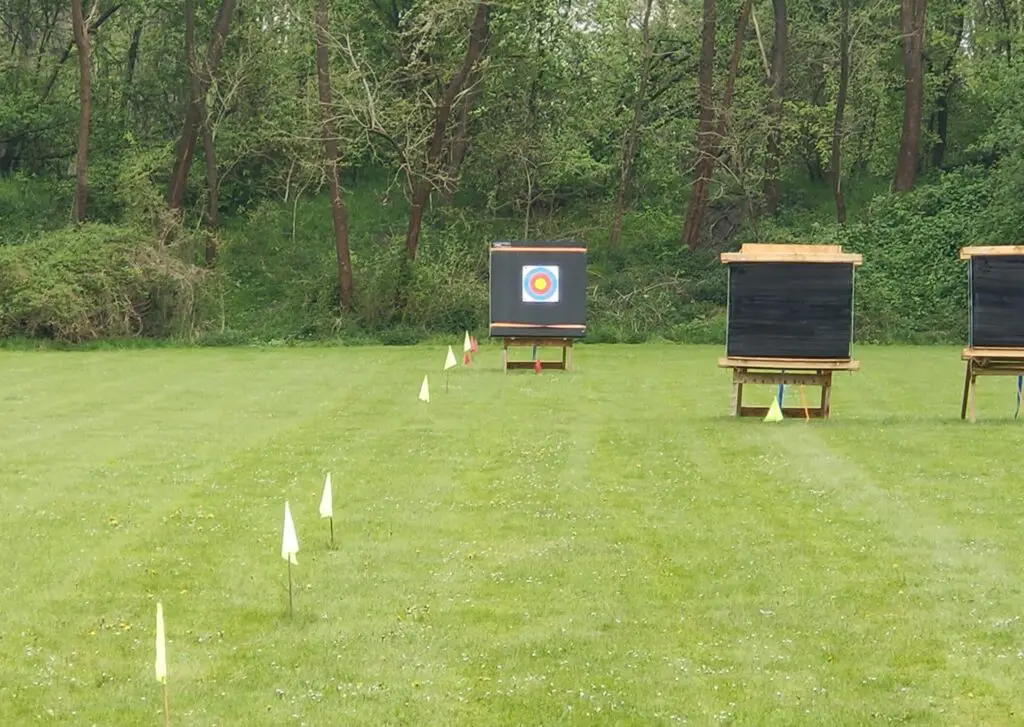
2. Wait until the wind dies down
In most cases, the wind is quite changeable. Just look at the graph below retrieved from this article. Look at the wind speed measure on the 14th and the 15th minute. On the 14th minute, the wind speed was 60 km/h; while on the 15th minute, the wind speed was less than 30 km/h. That’s a huge difference! Wind also often changes direction, which can make it near impossible to compensate for it.
Therefore, if the wind is changeable you don’t want to shoot when a wind gust hits. Instead, you want to wait until the wind dies down a little. Especially with a compound bow, holding the bow at full draw a bit longer shouldn’t cause any issues. If a wind gust hits, you could also wait a bit longer before you draw your bow if time allows it.
3. Aim towards the wind
Most have hardwired in their brain to aim in the center of the target. But if you do this during windy weather the wind will cause the arrow to drift away. Therefore, if you want to aim towards the wind if the wind is coming from the side.
If the wind comes from the left, you want to aim to the left and vice versa. It might be difficult to estimate how much you need to compensate, but with experience, you will improve this skill.
As mentioned earlier, you can use flags to estimate wind strength. You can also use the circles of the target as a reference. But in the end, you should also develop your senses by trial and error.
4. Use your windage adjustment
As mentioned earlier, some archers have engrained the idea of aiming in the center of the target. For them aiming to one side causes more issues than it solves. Luckily, you can also use your windage adjustment to account for the wind.
This might be a bit confusing, but you must turn your sight in the same direction as the wind is blowing. If the wind is coming from the left, you must turn your sight towards the left and vice versa.
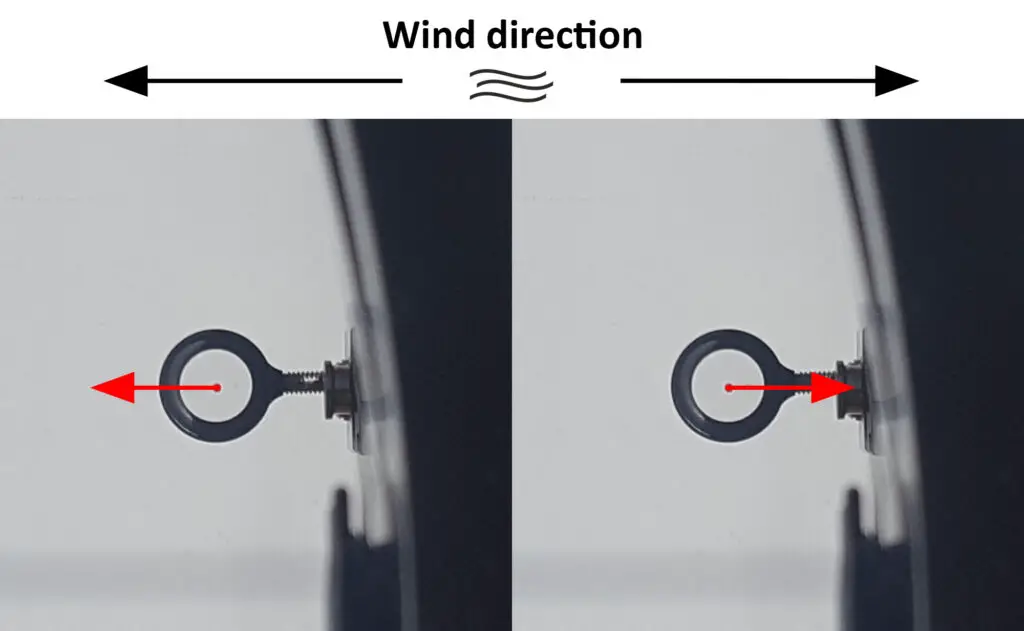
Make sure though to mark or remember your default windage position. When the wind dies down you want to return it to the default position. This works best with high-end sights which have markings. You simply use the center marker for the default position and the others to accommodate for the wind.
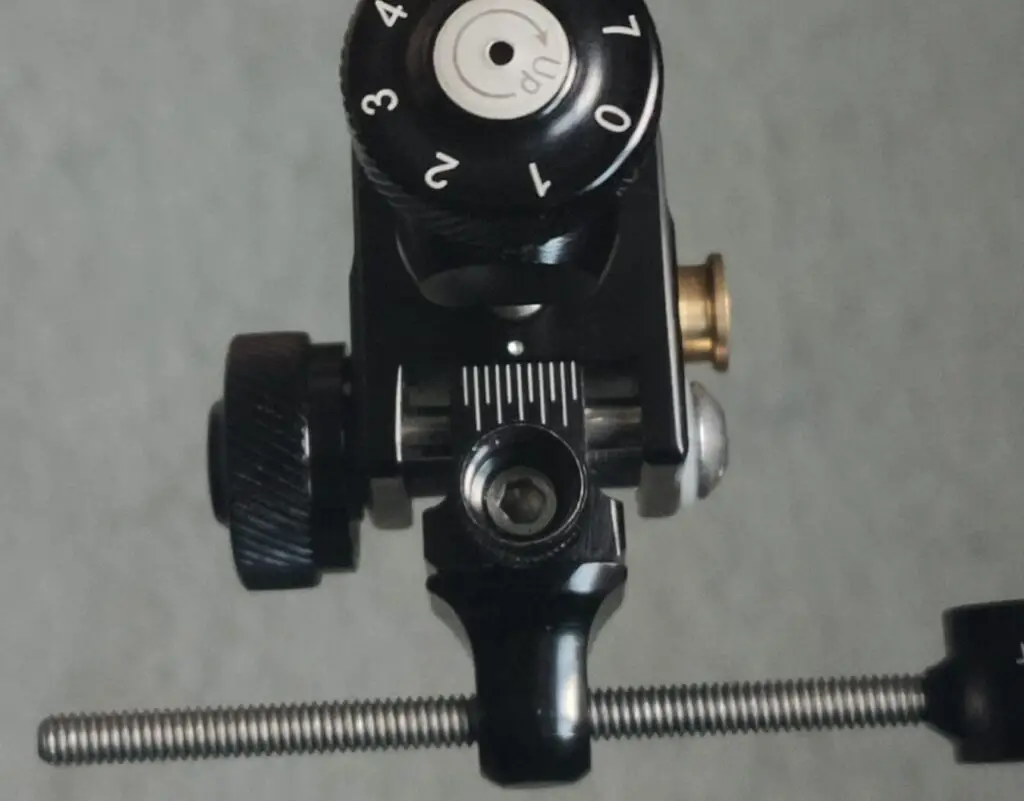
If you don’t have an advanced sight, I would highly recommend reading the article below and considering replacing it. Apart from this feature, higher-end sights have a lot of other features that help you to increase your accuracy:
How to pick the right sight for your bow
If you want to learn more information about how to configure your sight (including the windage console), read the article below:
How to adjust a bowsight – a complete guide
I have to say though, that this technique is only feasible if the wind is relatively consistent. You don’t want to change your windage setting for each shot. So only use this when you have a consistent wind from one side.
5. Use a weather meter
My last few tips were mainly focused on competition archers. Although hunters can also use some tips, they can’t plant flags all over the place to use as indicators. But hunters can use another great tool that helps you get a solid reading of wind strength.
A ballistic weather meter is often used by hunters that use rifles. These devices measure wind speed, direction, air pressure, and temperature. Especially the first two can be extremely helpful to find out how much you must lead the shot to accommodate the wind.
If you are looking for a good weather meter, I recommend the Kestrel 2700. This is the most popular option amongst hunters, with good reason. It’s waterproof, easy to use, and very durable. If you also want to use it with rifles, you can also consider a more expensive model. But this one is more than enough for bowhunting.
6. Use an oval or slim stabilizer
In the past few tips, I extensively discussed how you can account for arrow drift. But the wind also makes it more difficult to keep your bow on target. The wind keeps pushing your bow off target if you don’t resist it.
A consistent wind from one side is easy to account for. Especially when the wind is changeable it can be rather difficult to keep it in the center. This will cause you to over-correct and under-correct which causes a shaky shot.
Especially the stabilizer can cause a lot of issues. Since a stabilizer sticks forward far away from the grip, you need more force to prevent bow torque. The longer the stabilizer the worse this problem gets. But in most cases, you don’t want to use a shorter stabilizer either. Because longer stabilizers are more effective, as I explain in this article.
A good alternative is an oval stabilizer. These have less surface area on the sides which makes them more aerodynamic. Therefore, they catch less wind than traditional round stabilizers.
There is some discussion going on about these stabilizers though. Because the non-cylindrical shape can cause the stabilizer to work less effectively. Also, if the stabilizer is not correctly mounted, it makes the stabilizer less aerodynamic than the round version. Therefore, Easton started to manufacture a slim stabilizer called the Easton Contour which doesn’t have these issues.
It’s a quite expensive, but if you often shoot in the wind, you might want to give it a shot!
7. Increase the mass of your bow
Although a heavier bow might be inconvenient to carry it allows for a more stable shooting condition. As I mentioned in this article, heavier bows tend to vibrate less than lightweight bows. This is the case because it requires more energy to move a heavy object than a light object.
The same principles also make it easier to keep your bow in the right position while aiming. Therefore, it will require less effort to keep your bow on target.
Although you probably don’t want to replace your bow, there is a simple solution to achieve the same effect. Some recurve bows have a system that allows you to add weights on the bottom of your riser.
If that isn’t the case, you can always add some weights to your bow by using a screw-on riser weight. These can be attached to any stabilizer screw port. If you are already using a stabilizer on a recurve bow, you can also use the lower stabilizer bushing. I wouldn’t recommend using the upper stabilizer bushing because this makes your bow top-heavy.
You can find a lot of different riser weights on the website of JVD Archery.
8. Use thin arrows
Indoor archers like to use arrows with a large diameter. Since you get points for the highest ring your arrow hits, this gives you a slight advantage. An arrow with a larger diameter just has a slight chance of cutting the line to get a higher score. Especially on small targets, this can make a significant difference.
Most outdoor archers on the other hand choose the shoot with thin arrows. Thinner arrows are more aerodynamic, which means that they drift less far away from where you are aiming at.
This benefit is a lot more important than the slight increase in the chance to cut the line of the higher-scoring ring. Especially on the larger target, the actual benefit of shooting with thicker arrows is very small, even if there is no wind at all.
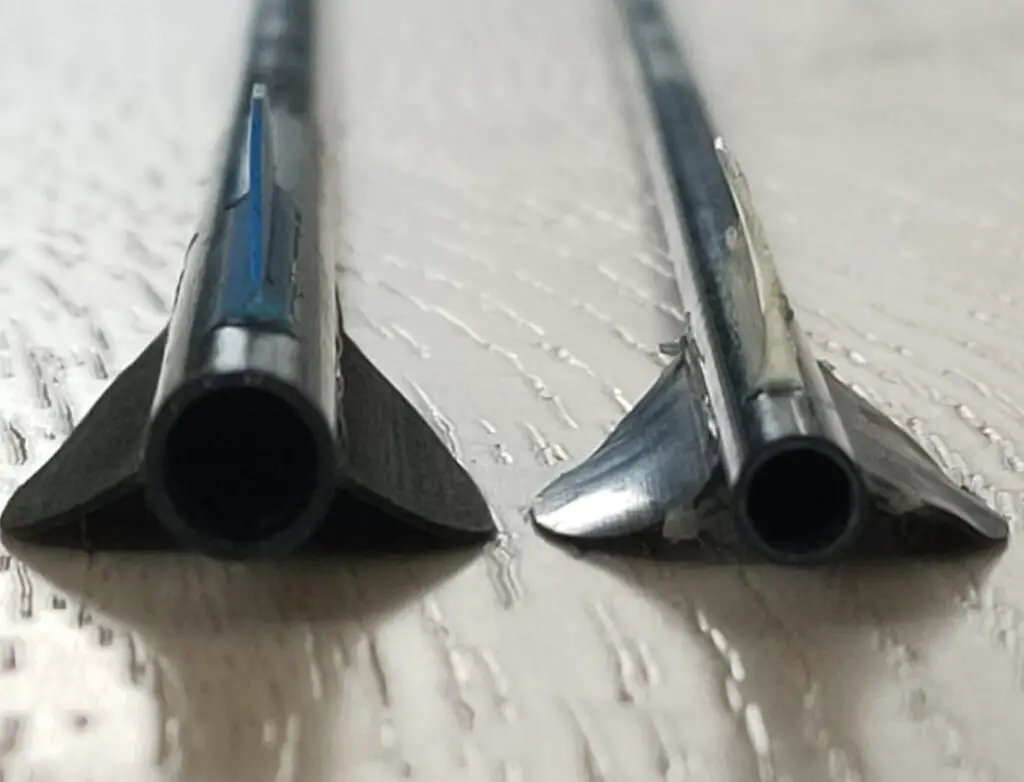
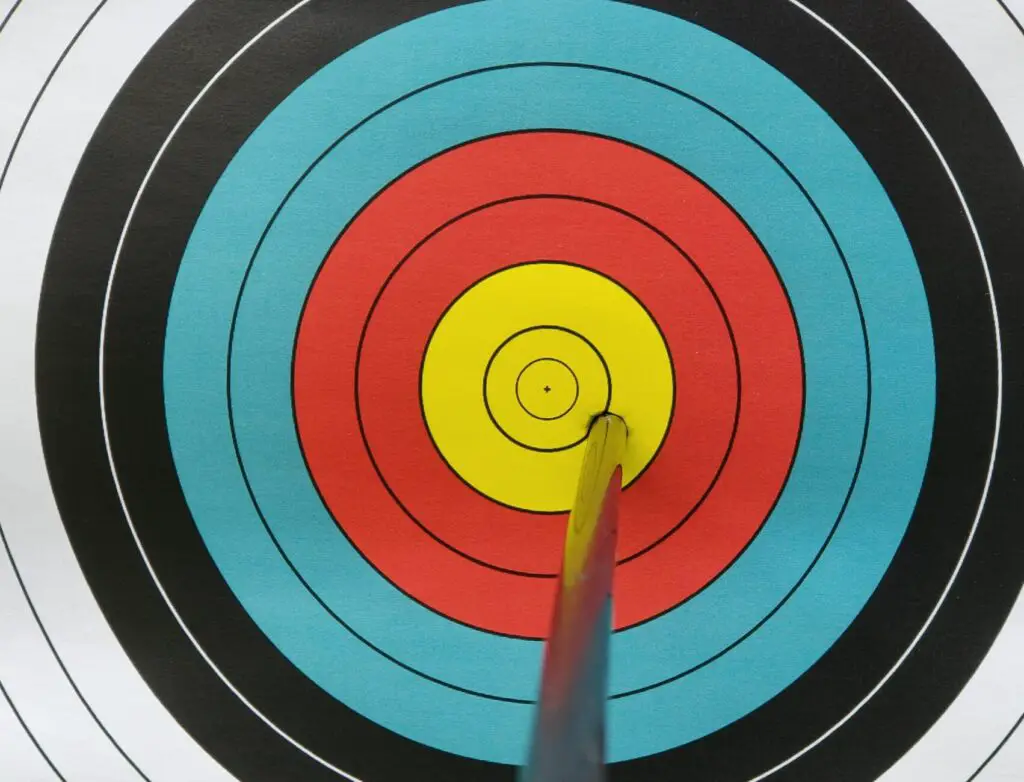
9. Increase the draw weight of your bow
I mentioned in a few articles already that a lot of archers are quite obsessed with their draw weight. Although draw weight doesn’t matter that much in most cases, it does matter when there is a lot of wind.
The faster your arrow flies the less it will be influenced by the wind. Therefore, it will be a lot easier to shoot a bow with a heavy draw weight than with a heavy draw weight. You will be able to aim closer to the center or make smaller changes to your windage settings.
If you significantly increase your draw weight, you often also increase the weight of your point. This is also beneficial because this makes your arrow more stable in flight. Therefore, increasing the draw weight of your bow can make a noticeable difference in your accuracy in windy weather.
Don’t think too lightly though about increasing your draw weight. You still need to be able to keep it at full draw. If you rush your shot, your shots will get worse instead of better. If you consider increasing your draw weight, make sure to read the article below. I discuss both the pros and cons of a heavy draw-weight bow:
The pros and cons of a heavy draw weight bow
Some final tips:
Alright, those are the 9 tips to improve your archery performance during windy weather. Before you go, I quickly wanted to give you two additional tips. They might seem logical, but I often forget them myself.
- Secure your hair: it is standard practice for archers with long hair to wear it in a ponytail or to tie it up, as I explain in this article. Most archers with medium-long hair don’t do this though because the hair cannot get near the string. But if you have hair that can get in your eyes, I would wear a hat or beanie during windy weather. It caused me a lot of frustration during a recent outdoor practice!
- Wear tight clothing: while shooting your bow, you should always wear a reasonably tight jacket or shirt for safety purposes. I however made the mistake to wear loose pants on a windy day. The pants kept flapping around which distracted me while shooting.
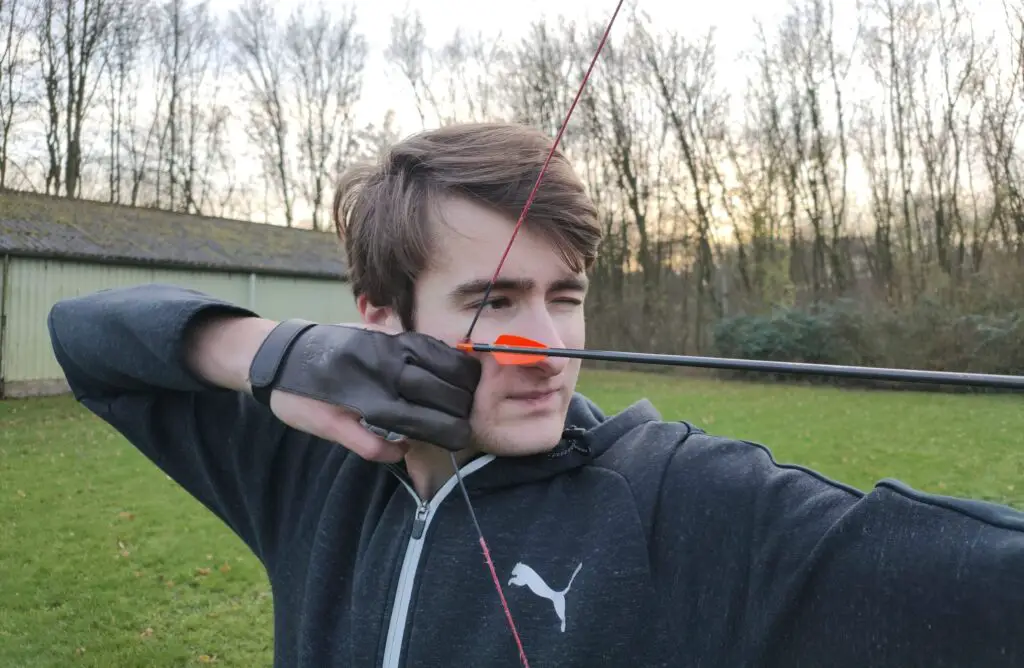
Final words
I hope you found this article helpful. If you have any tips you believe I forgot to mention, please leave them down below. I would love to add them to this article.
If you have any questions or feedback, please feel free to leave them down below as well. I will answer your question as soon as possible and I will send you an email once I replied.
Tim van Rooijen
For as long as I can remember, I have always been fascinated by archery. First due to its historic significance but later because I like being outdoors. With this blog, I share my knowledge about Archery and how you can improve your shot. More about author…




